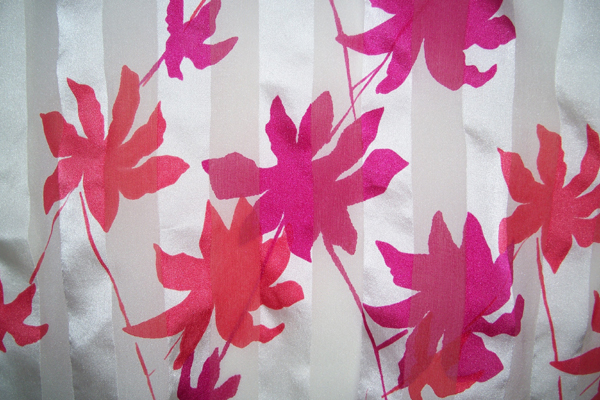Patience Beaumont
I trained at the London College of Furniture, and the Suffolk College of Art. I’ve always been interested in making things, especially those involving colour so gravitating towards dyeing was a natural progression.
When I was training I enjoyed screen printing and working with wood and lino blocks and I am now trying to incorporate block printing into my work with natural dyeing. The natural dyeing process can be quite complicated and it is a mistake to think that because you use natural dyes (ones that are grown or collected, such as lichen) they are safe. Some of them can be quite toxic and this doesn’t take into account the mordants used. Some dyes don’t need a mordant and these dyes are called substantive dyes. One of these dyes is saffron, which I use constantly in very small quantities. A mordant is a substance that makes the dye adhere to the cloth. Only natural fabric can be used for natural dyeing, for example, wool, cotton, silk etc. I do use chemical dyes for some of my batik work because natural dyes have to be heated and it isn’t possible to use hot dyeing processes with wax.

When I did a dyeing demonstration at Reading University some years ago I was so interested in the dye plants that they were growing in the University grounds that I’ve since attempted to grow some of my own, with varying degrees of success. I did harvest a small quantity of madder last year but the plant has since vanished. Nearly all the dye plants need heat to flourish and we don’t get enough reliably hot weather here. However I do grow a crop of golden rod each year and l’ve found that this gives a good range of colours from bright yellow through to olive green.
For inspiration I try to do some drawings of the hedgerows in the village in the spring. I also do some sketching on my annual visits to Madrid and Segovia. In the future I want to do some weaving with my own dyed yarn.


